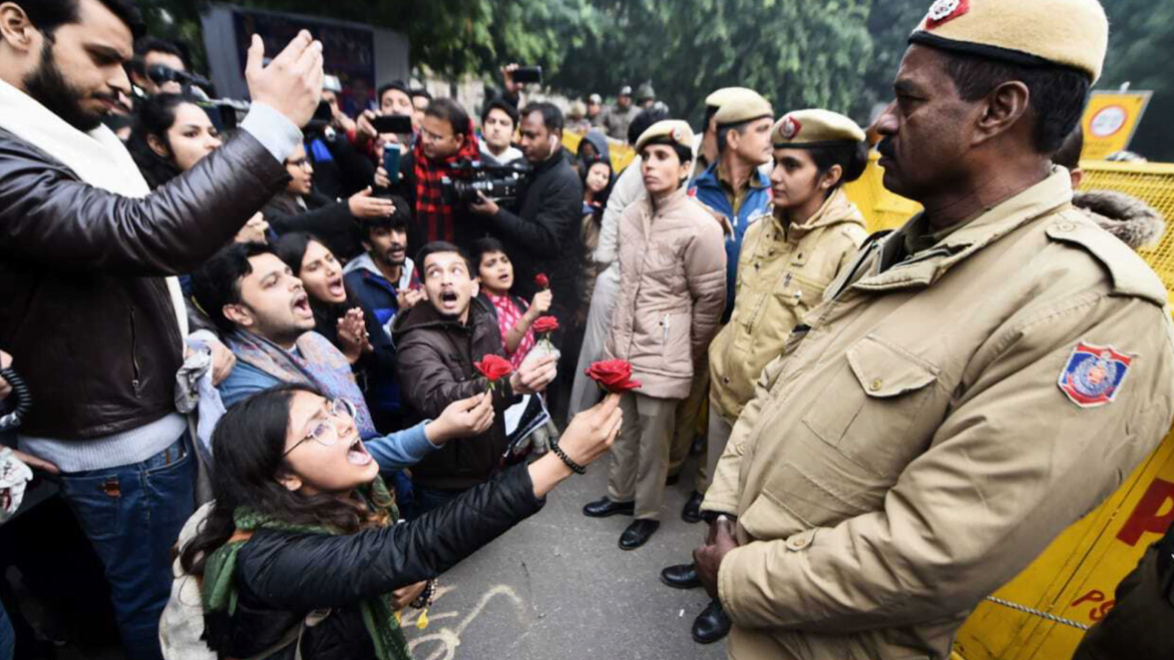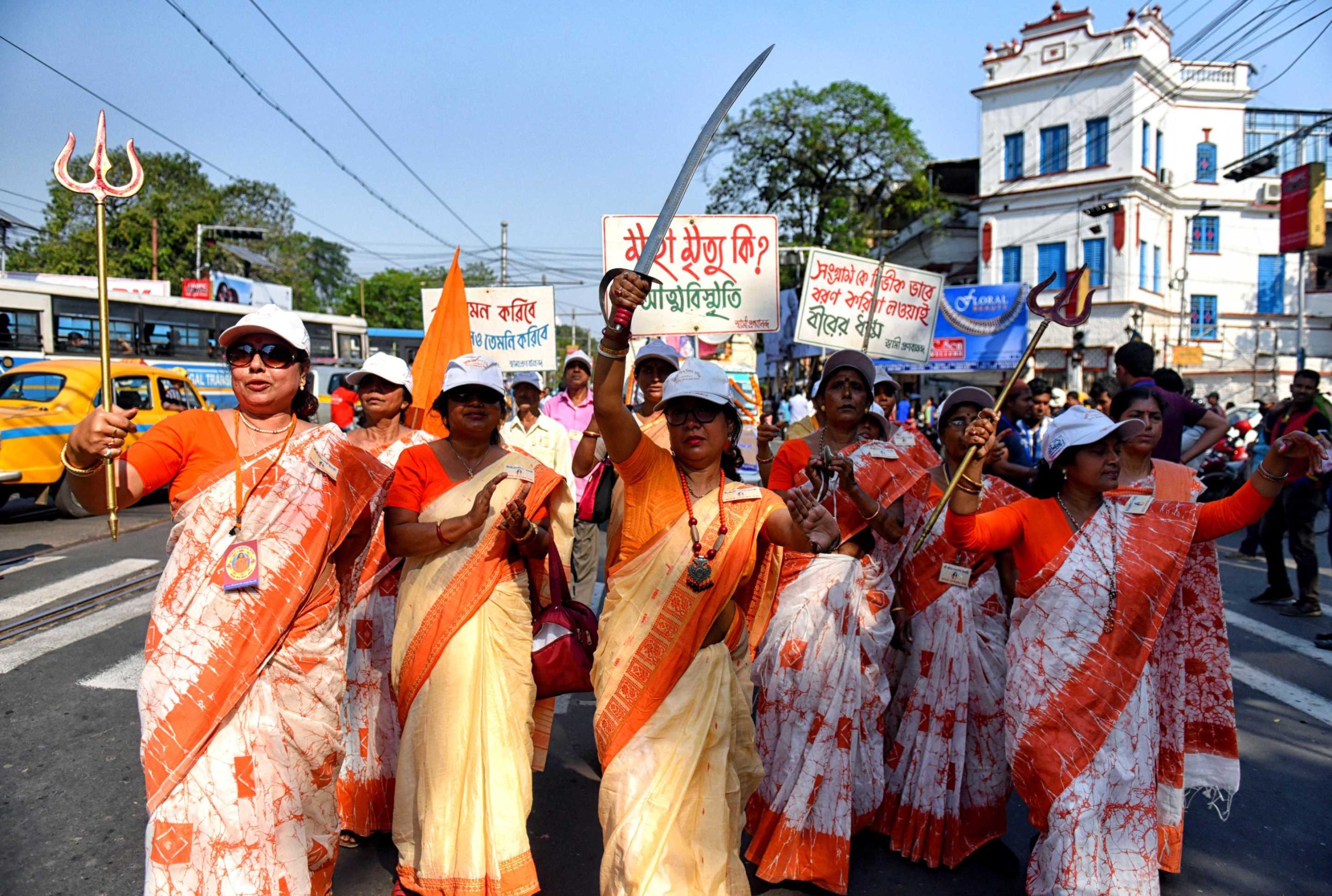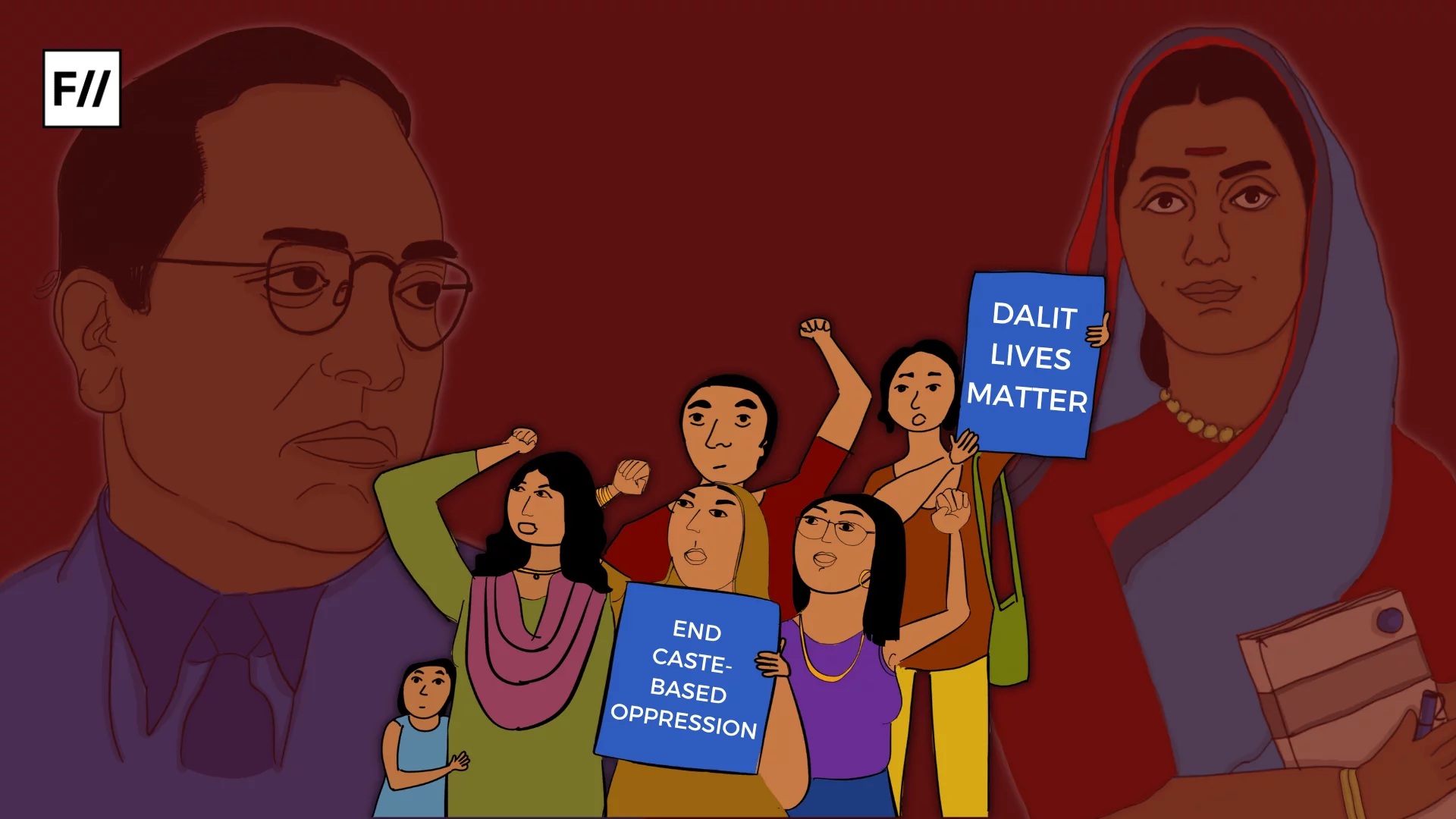The protests against the Citizenship Amendment Act grew substantially after the police brutality in protests in Jamia Millia Islamia University and Aligarh Muslim University. After this, students from all across the country and abroad came forward to stand in support of the student community at JMI and AMU. Last week, several protests took place across the country and saw an influx of people coming from all socio-economic backgrounds to reject the Act and fight against police brutality.
On December 19, one of the largest ever mobilisations against CAA-NRC took place in Delhi and a picture that was quick to become viral on social media was that of a young woman handing a rose to the Delhi Police. Videos of several student protestors holding roses in their hands and shouting slogans were soon to follow.
“Hum yuvaa hai baat karenge, naki ghusaa laat karenge
Dilli police baat karo, aao humare saath chalo!”
(We are the youth who just wanna talk, and not punch or kick
Delhi police talk to us, come together and walk with us)”
Also read: Why Are Feminists Opposing The Citizenship Amendment Act?
Relevance of non-violence protests
Non-violent protests are embedded in Indian history and were initiated during the independence struggle. Gandhi’s principles of self rule and satyagraha were soon to pick up and inspired generations of people about peaceful protests and standing in solidarity against the perpetrator. The act of handing a flower to a policeman, I believe, was also inspired by the Gandhian principles our country was founded on. Over the last week, at the highest point of protests in Jamia, students were blamed for inciting violence. This act became symbolic of the fact that students don’t want to put across their point through violent means and they are just there to oppose the government’s policies in a peaceful way. The students also said that no matter what the police does they will offer them “love in return for hatred.”
This act became symbolic of the fact that students don’t want to put across their point through violent means and they are just there to oppose the government’s policies in a peaceful way.
It is believed that non-violent protests are a great way of putting across your point instead of inciting violence. Dr. Blair Claire, a history professor at University of North Carolina says that “Non Violence works because it removes physical resistance from the Political Equation. Protests that might otherwise be dismissed as riots or mob violence can be seen simply as dissent. The focus rests on the object of protest, and not behaviour of the protestors.” This helps protestors stand their ground and advocate rigorously for the cause. Amidst violence that went about during Jamia Protests and “who burnt the bus” becoming the biggest question, this picture made the cause the focal point of the protests again. It reiterates the value of kindness in the face of adversity and gives out a strong message.
This picture is also reminiscent of the viral picture of Jan Rose Kasmir who gave the personnel flowers in response to their arms during the protests in America against the Vietnam War. Flowers are symbolic of peace and this act reiterated the value of peaceful means to dissent. In addition to that, pictures like these are quick to become viral and can be strong especially because they highlight the power difference between armed personnel and student protestors.

Police Brutality
However, this photograph was also criticised because people went on to question why the students offered flowers to the police despite the blatant abuse of power by the police that was witnessed earlier. Multiple cases of police brutality have come out since the Jamia protests where the police have lathicharged students, released tear gas bombs and used water cannons and to control the protestors. The death toll has reached 18 in Uttar Pradesh, including an 8 year old minor and over 5,400 people are in police custody and the government is also expected to invoke the NSA (National Security Act) against 250 protestors. Two people were also killed in Mangalore when the police opened fire. There is terror spread all over the country and people are fearing the brutality of the police. With internet shutdowns in so many districts and police incessantly detaining people and abusing their power, this Act somehow attempts to neutralise the abuse that people across the country have been going through.
One cannot escape the privilege hidden behind the act of giving a flower to a policeman. Would the Delhi police have reacted as stoically and calmly had it been a visibly Muslim person approaching them? Other reports show police arbitrarily detaining visibly Muslim people – even when they are simply walking quietly. The December 19 protest saw people coming from a multitude of socio-economic backgrounds, but majorly upper-caste upper-class students. This protest was carried out rather peacefully where the police didn’t lathicharge and detain people without the use of force. In contrast to this, protest in Daryaganj, a Muslim-dominated area, saw protestors being brutally lathicharged by the Delhi police. Over forty were detained, including eight minors, and were denied legal and medical assistance. This proves how differently the public and media alike react towards people coming from different socio-economic backgrounds protesting for the same cause.
Conclusion
As much as this act stood out, it shouldn’t be seen as the only way of dissenting. At this point, where fractures within the groups will be ideal for the autocratic government, we cannot let ourselves break into multiple divisions, just because we have chosen different forms of protest. We need to unite against hate, and come together in whatever way possible.
So how far will this act contribute to humanise the protestors and cultivate empathy in the minds of the police and the State? Would they now look at the protests with a strong cause rather than just more chaos that they have to deal with?

Also read: What It’s Like Being The Only CAA-NRC Protester In My Family
Featured Image Source: Twitter
About the author(s)
Anvi Ahuja is pursuing her bachelor's degree in Political Science at Delhi University. When she's not talking to dogs, you can find her reading, talking about feminism or breaking the taboo around menstruation.




